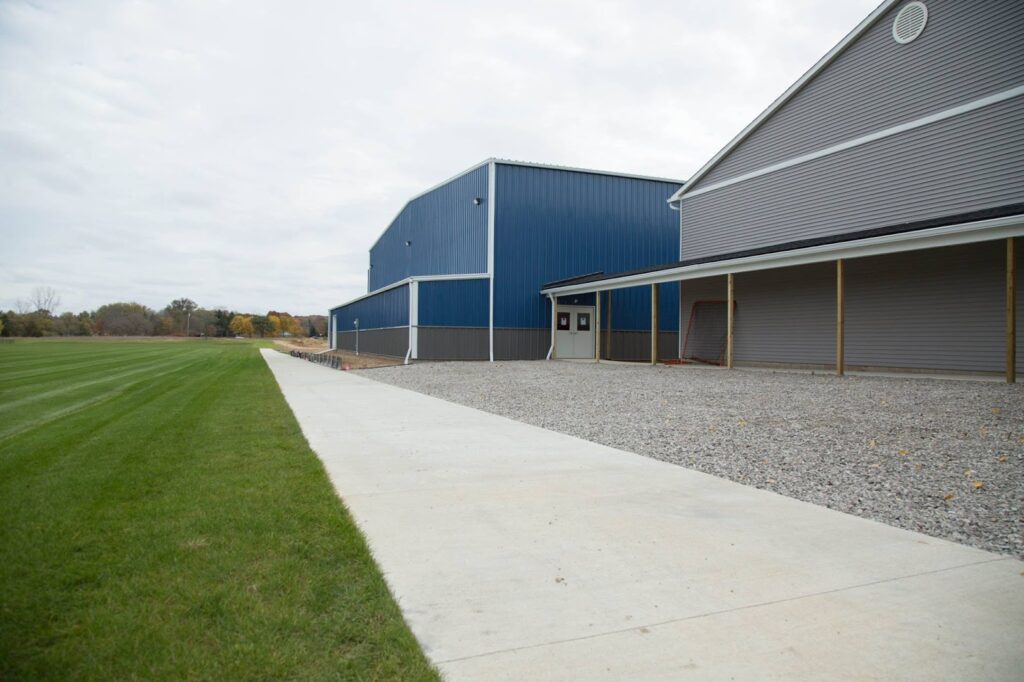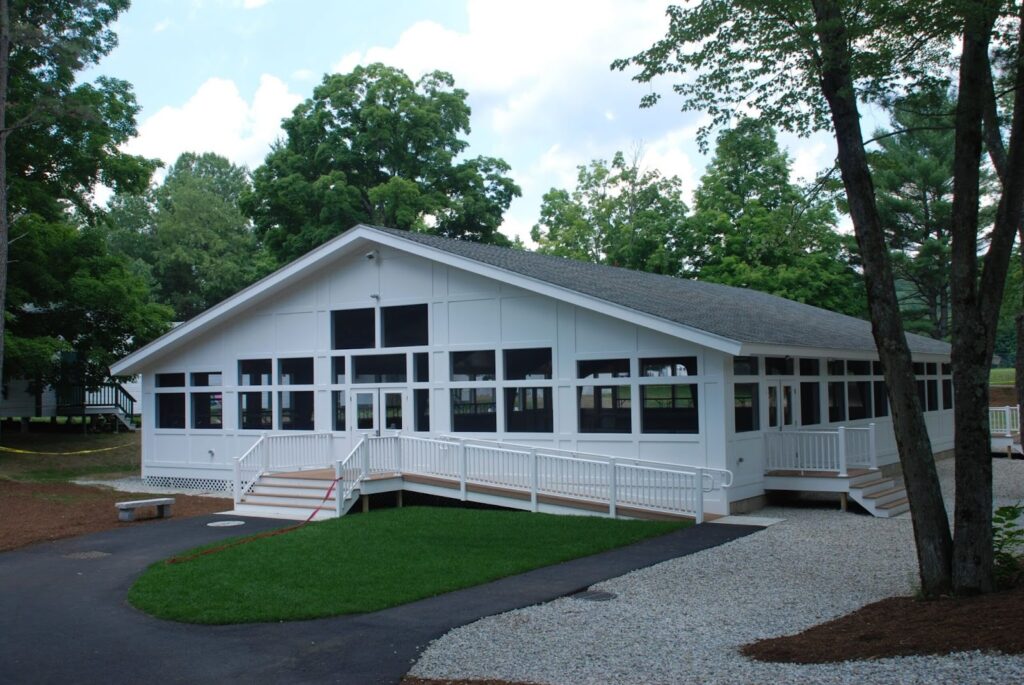From airport hangars to farm silos, shopping malls to family homes, I-beams are the hidden heroes that keep our buildings standing strong. These remarkable pieces of engineering, shaped like the letter “I”, have revolutionized how we build structures of all sizes. Today, we’ll explore how these steel marvels make modern construction possible across different industries.
What Makes Up an I-Beam?
An I-beam gets its name from its shape, which looks exactly like a capital letter “I” when viewed from the end. The top and bottom parts are called flanges, like the caps of the letter “I”. The middle section connecting them is called the web, similar to the vertical line in the letter “I”. This design isn’t just for looks – it’s carefully engineered to handle enormous weights while using as little steel as possible.

Aviation: Building Hangars That Touch the Sky
Aircraft hangars present unique challenges in construction. These buildings need to be incredibly wide to house massive planes, yet they can’t have support columns in the middle that would get in the way. This is where I-beams truly shine. A modern commercial airline hangar might use I-beams spanning 200 feet or more – that’s nearly as long as a Boeing 747!
The roof of an aircraft hangar typically uses massive I-beams called trusses. These beams might be 12 feet tall or more, weighing hundreds of pounds per foot. For example, a typical hangar beam might need to support a roof load of 500,000 pounds. Using W44x290 I-beams (44 inches tall, weighing 290 pounds per foot), engineers can create these column-free spaces that keep million-dollar aircraft protected from the elements.

Agricultural: From Grain Silos to Equipment Sheds
Farm buildings face their own set of challenges. Grain storage buildings need to support not just their own weight, but also thousands of tons of corn, wheat, or soybeans. A typical grain storage facility might use W24x76 I-beams (24 inches tall, 76 pounds per foot) to support loads of up to 3,000 pounds per foot.
Equipment sheds need wide, open spaces to store combines and tractors. Here, I-beams create clear spans of 60 feet or more, letting farmers move equipment freely. The beams in these buildings often handle unique loads, like when heavy equipment bumps into support poles, or when wind causes strong side-to-side forces on the tall walls of grain bins.
Commercial: Making Shopping Centers and Offices Possible
Modern shopping malls and office buildings would be impossible without I-beams. These buildings need large, open spaces for stores and flexible office layouts, while also supporting heavy loads from multiple floors. A typical shopping mall floor might need to hold 100 pounds per square foot to account for people, shop fixtures, and merchandise.

In a three-story mall, the ground floor I-beams might be W36x170 sections (36 inches tall, 170 pounds per foot) to support both the upper floors and thousands of shoppers. The same beams help create high ceilings and wide-open spaces that make shopping centers feel welcoming and spacious.
Office buildings use I-beams to support computer servers, filing cabinets, and open-plan offices that can be rearranged as needed. A typical office floor using W24x68 beams can support 50 pounds per square foot of regular office equipment, plus extra capacity for heavy items like server rooms or document storage.
Residential: Making Homes Stronger and More Spacious
While many homes are built with wooden beams, I-beams are becoming more common in residential construction, especially for basements and large open spaces. A steel I-beam can replace several wooden beams, creating stronger supports that won’t sag or warp over time.
For example, a 20-foot span in a home’s basement might traditionally need a doubled-up wooden beam 12 inches tall. The same span could be handled by a single W10x22 I-beam (10 inches tall, 22 pounds per foot), creating more headroom and a stronger support. This becomes especially important when homeowners want to remove walls to create open-concept living spaces.

How I-Beams Handle Different Loads
Each type of building puts different demands on its I-beams. An airport hangar needs to handle not just the weight of its massive roof, but also wind loads that try to lift the roof off. Agricultural buildings need to resist both the weight of stored grain and the side pressures it creates. Commercial buildings must support the constant movement of people and goods, while residential I-beams need to keep floors from bouncing when people walk across them.
Let’s look at a real example from a commercial building. Say we need to support a 30-foot wide store space with people, displays, and a possible future second floor. Engineers would calculate the total load as: Floor weight: 20 pounds per square foot People and displays: 50 pounds per square foot Future second floor capacity: 40 pounds per square foot Total: 110 pounds per square foot
For a beam spanning 30 feet and supporting a 15-foot wide floor area, that’s: 110 pounds × 15 feet × 30 feet = 49,500 pounds total load
A W24x76 I-beam can handle this load easily while keeping the ceiling height comfortable for shoppers. The beam’s strength (called section modulus) of 176 cubic inches means it can safely support up to 352,000 pound-feet of bending – much more than our required 185,625 pound-feet (49,500 pounds × 30 feet ÷ 8).
The Future of Building with I-Beams
As buildings get taller and spans get wider, engineers keep finding new ways to use I-beams better. Modern computer design lets them analyze exactly where stresses will be highest and choose the perfect beam size. New high-strength steels let them use smaller beams that still handle the same loads, saving money and making buildings lighter.
Some exciting developments include: Smart sensors built into I-beams that can warn about problems before they become serious New coatings that protect beams from fire and corrosion better than ever Hybrid designs that combine steel I-beams with carbon fiber reinforcement for even longer spans
Final Thoughts
From the biggest airport hangar to the coziest home basement, I-beams make modern buildings possible. Their simple yet brilliant design handles everything nature and human activity can throw at them, all while using materials efficiently. Next time you’re in a shopping mall, farm building, or airport, look up at the ceiling – those I-beams above your head are quietly doing their job, keeping everyone safe and comfortable through clever engineering.
Looking for your next I-Beam buildings? Give us at call at 800-445-0412 for a free quote to get your project started!
